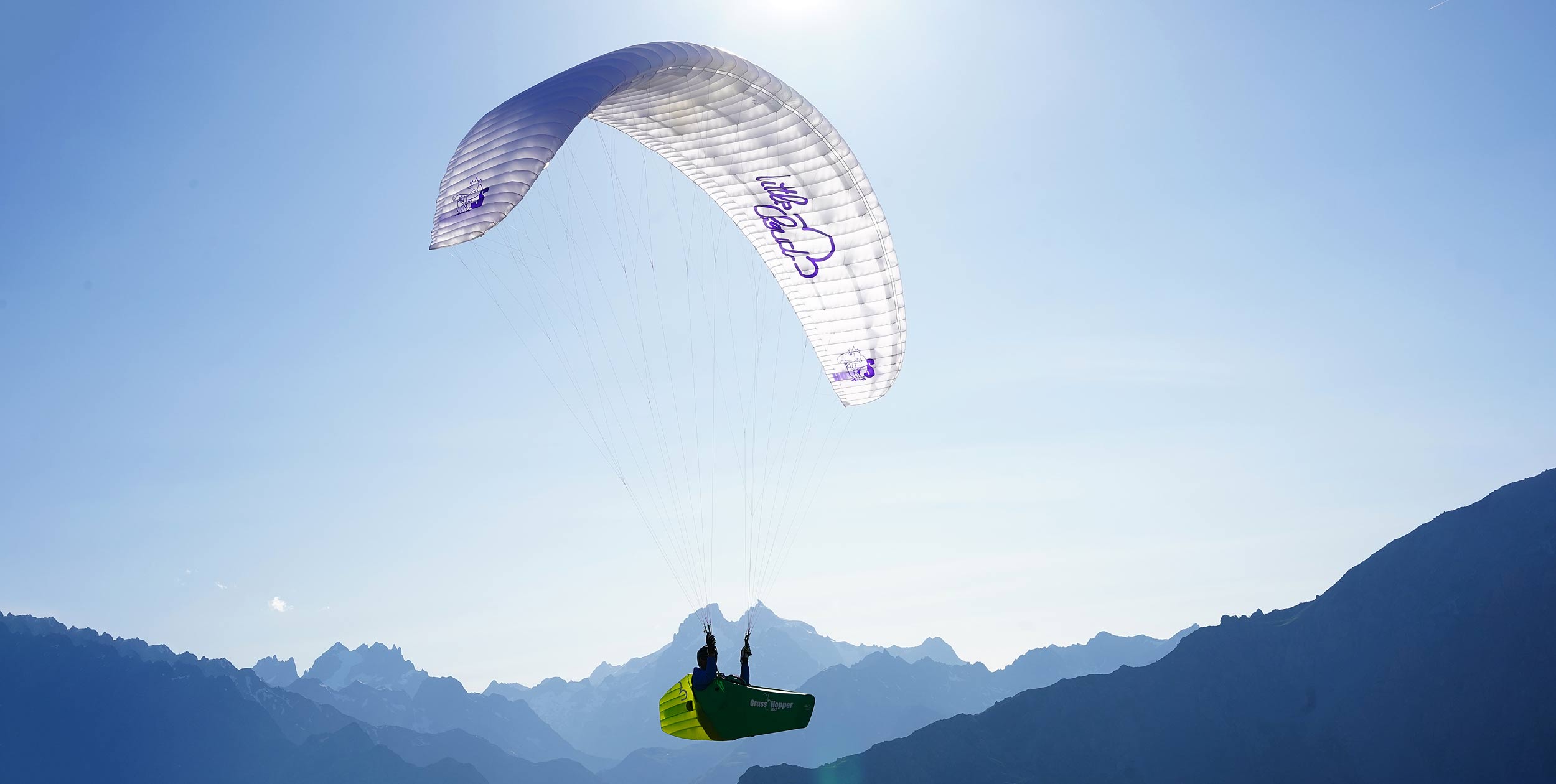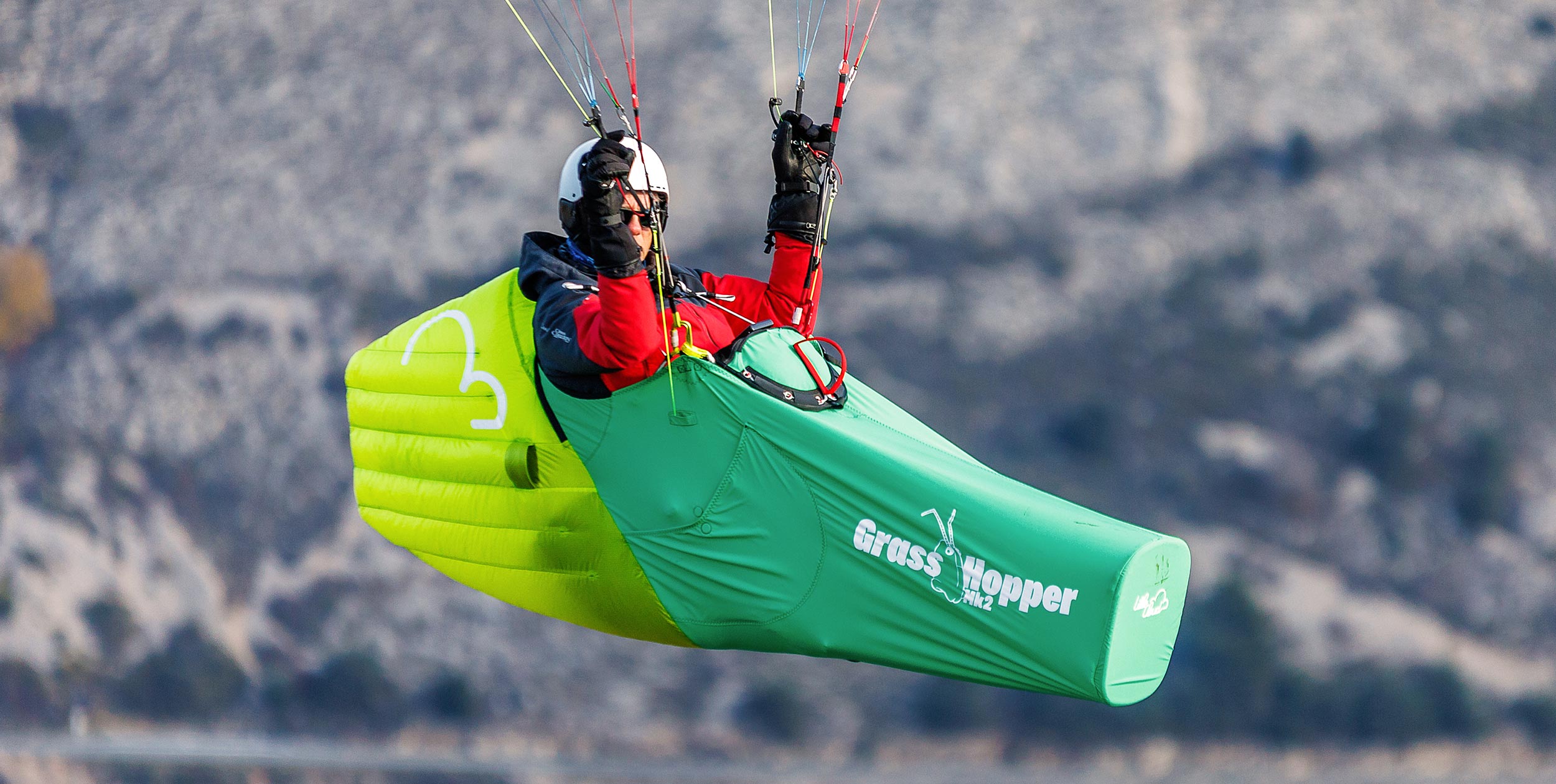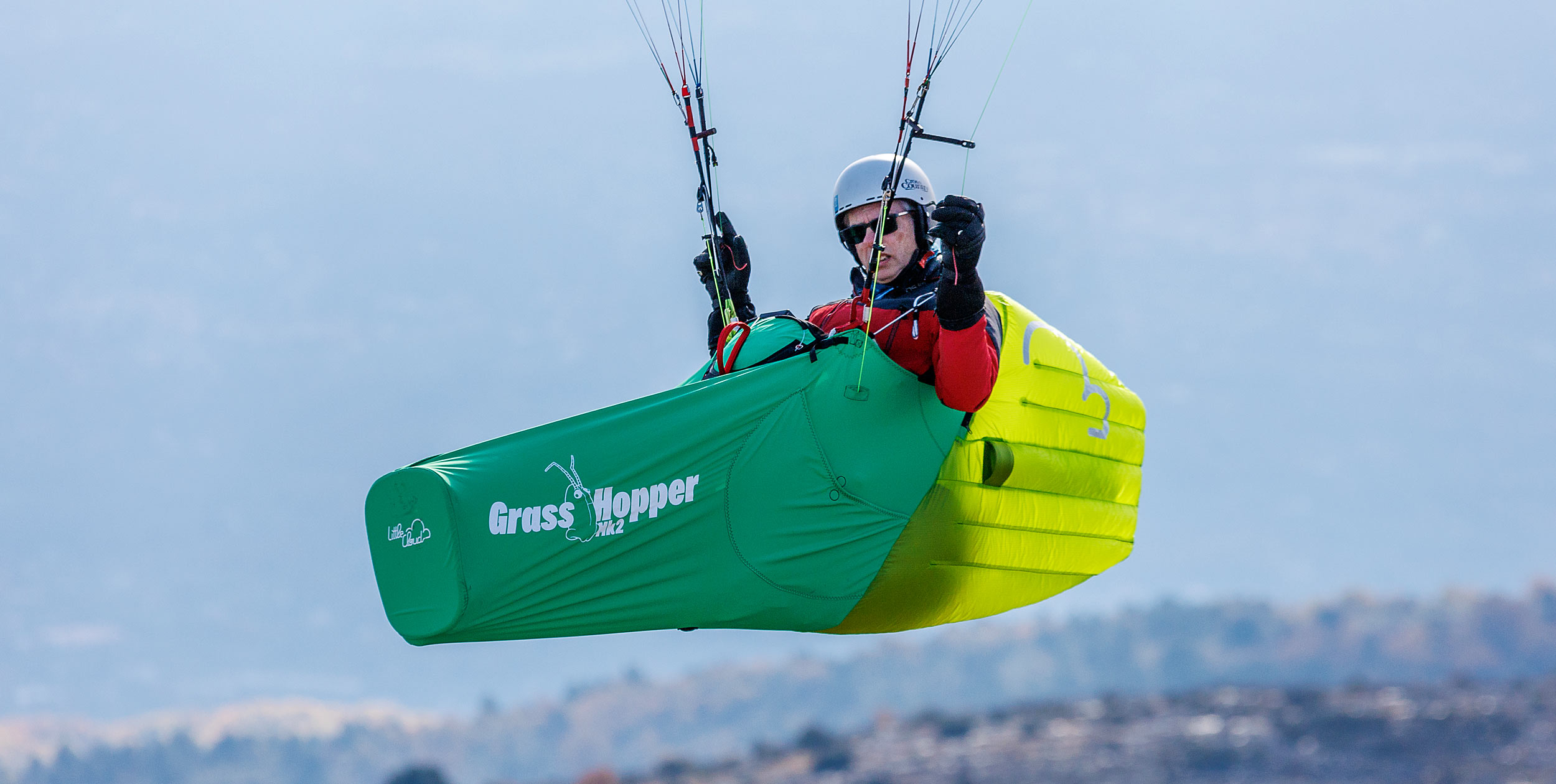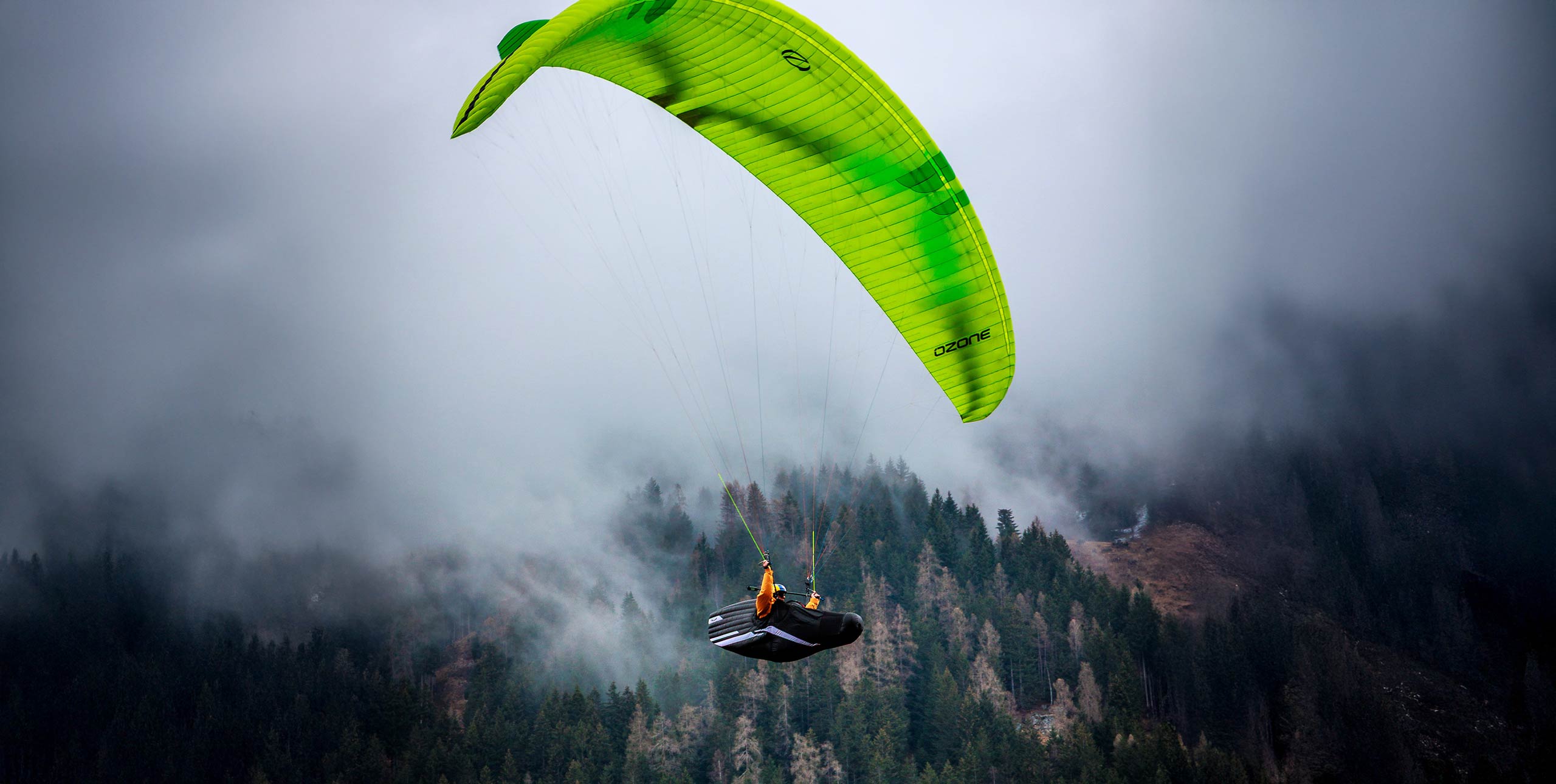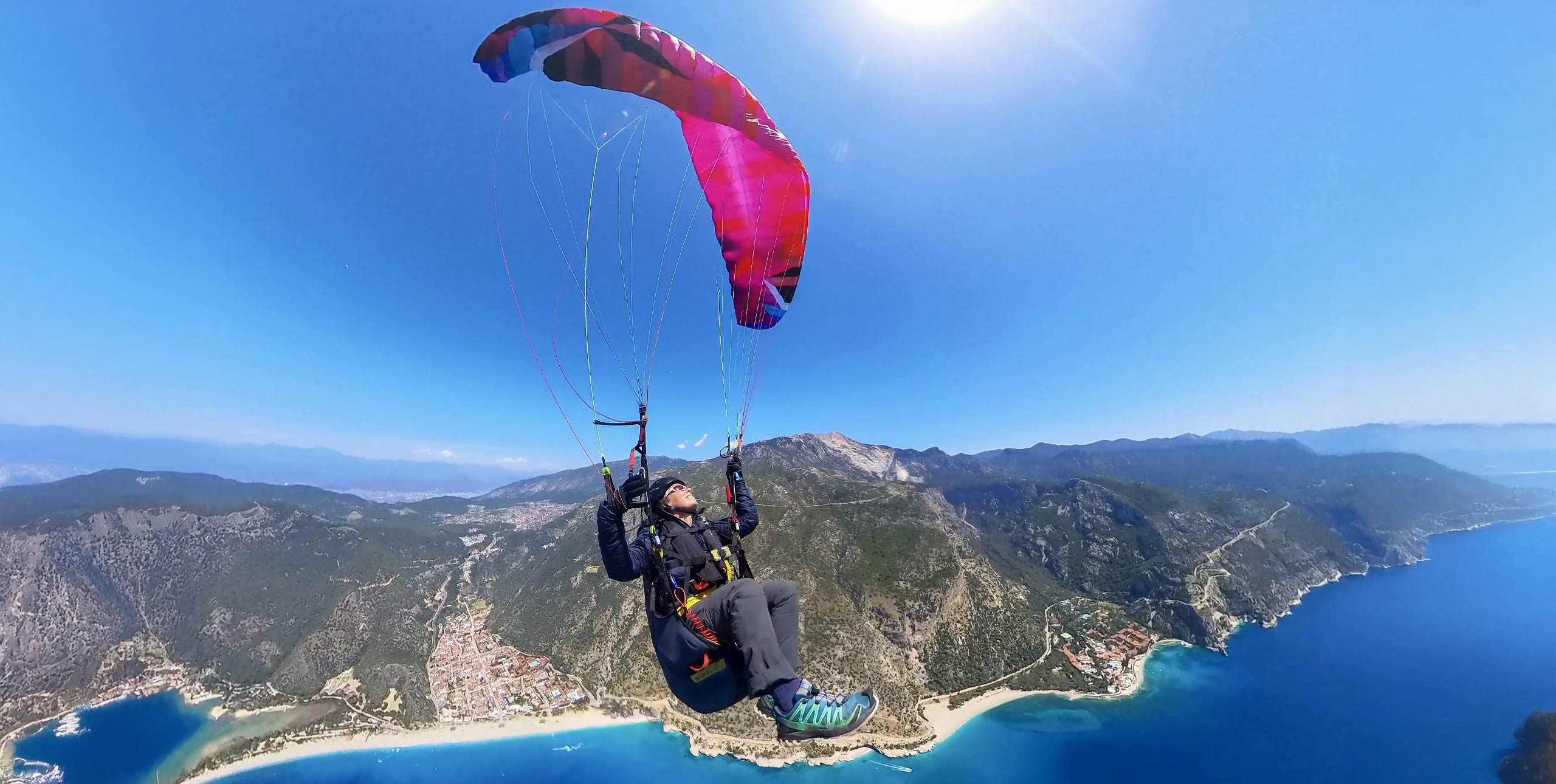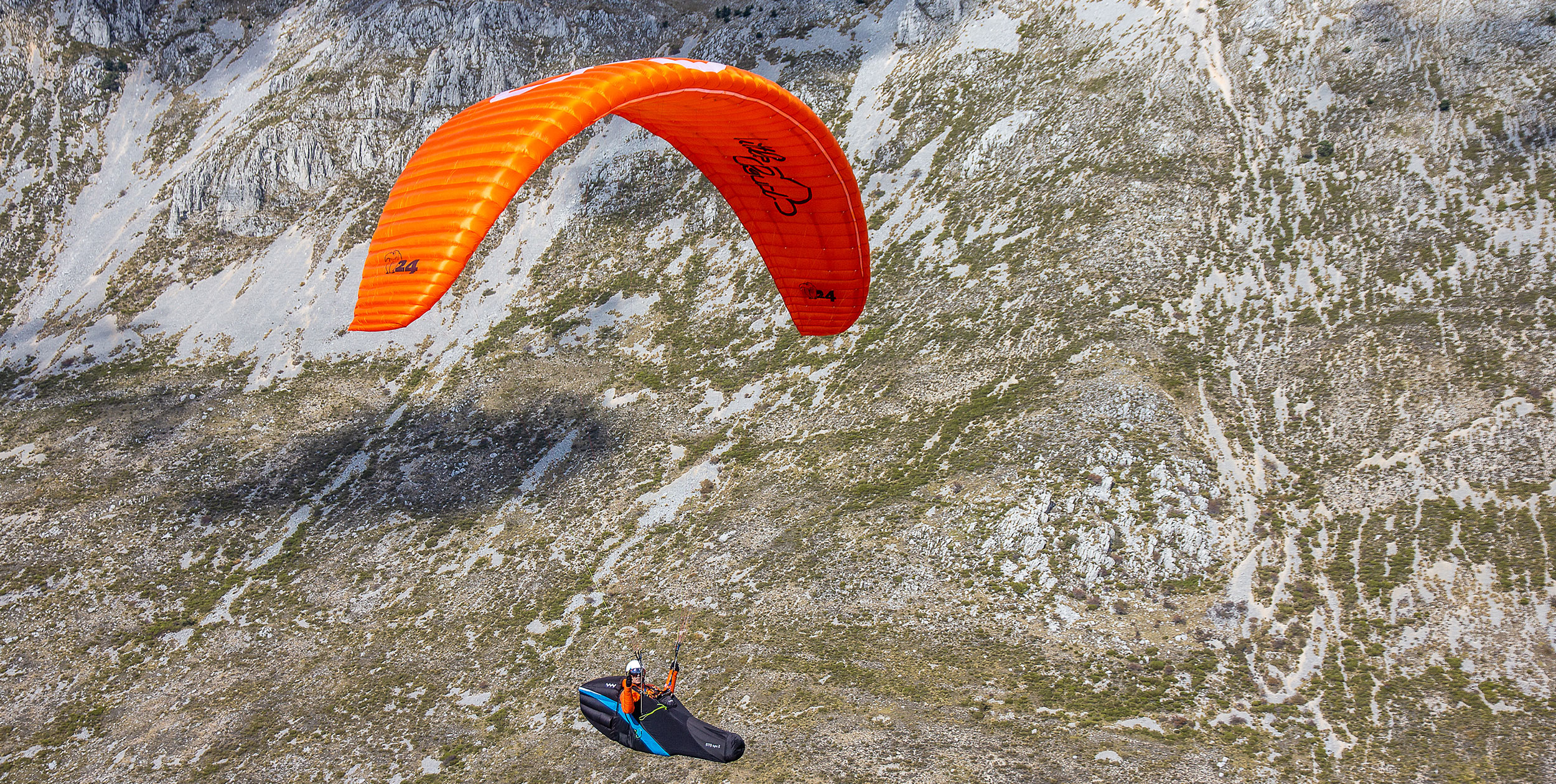
Marcus King flies the latest lightweight sports class glider from this independently-minded manufacturer
Ten-second review
Don’t be put off by the deliberate lack of certification, this is a wing that fits the Sports class for XC. Light construction also makes it attractive for pilots who want a performant wing for hike-and-fly, vol-biv or travel.
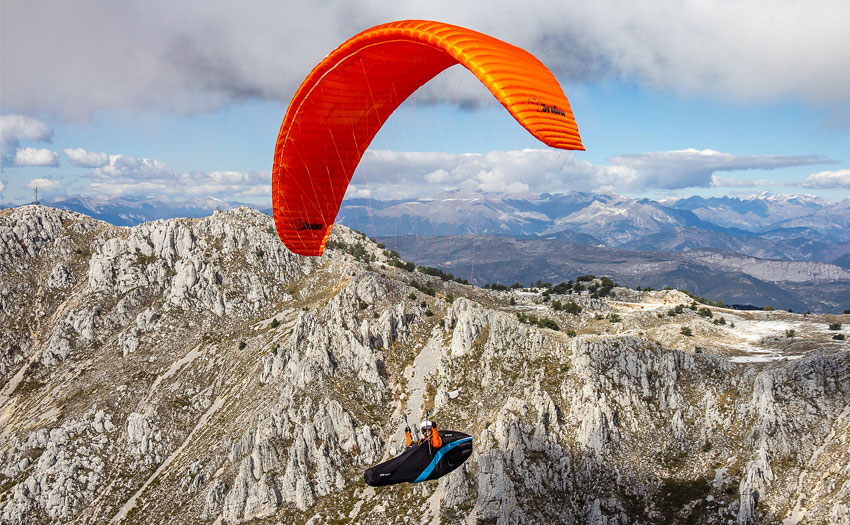
Background
Named after a small Brazilian vulture, the Urubu is the highest performing wing in Little Cloud’s range. It is aimed at C-class pilots “doing cross-country and travelling”. But as with all Little Cloud wings it doesn’t have EN flight certification. That of course demands some explanation.
“Non-certification in flight is a deliberate choice,” LC say on their website. Owner and designer Tom Bordeau expanded on that when we chatted in person at the Stubai Cup in Austria in March. “In my opinion [certification] does not reveal the whole real-life situation. When you have a collapse in turbulent conditions you get something very different from an induced collapse.”
He added: “I decided not to play the certification game. Instead I spend a lot of time testing and flying the gliders in real conditions, to make sure they are very safe for real life. This is the way I feel comfortable to sell gliders to people. I don’t want to rely on someone else testing it and saying, ‘OK you can sell this to these guys’. I want to know really what’s inside.”
This undoubtedly makes it harder to sell to those who don’t know Little Cloud and Tom’s work ethic, but it also reduces development costs and the need to tune the wing to the demands of the EN test. The wing is strength-tested to the EN 926-1 norm.
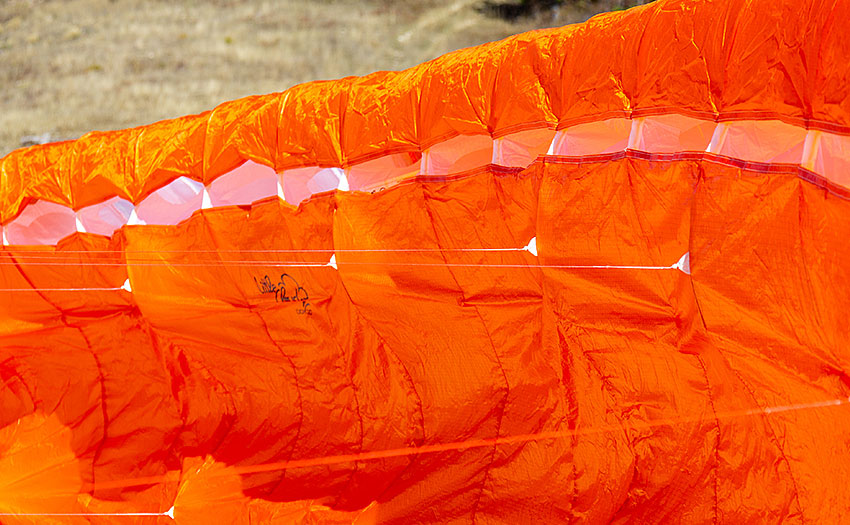
First impressions
Developed from the same planform as the Gracchio (reviewed in XC201), the Urubu has the same number of cells, 57, but has a reworked shape and an increased flat aspect ratio of 6.14 (compared to 5.7). This makes the aspect ratio not super high for this class of wing: Ozone’s Delta 4 has a lower A/R of 6.05, whereas the Flow Fusion, BGD Cure 2 and Skywalk Cayenne all have higher A/R at 6.35, 6.4 and 6.43 respectively. There is quite a bit of curve on the tips and the wing has a nice racy look. It’s available in four sizes, from 55kg to 115kg.
First impressions, the wing looked bright and shiny in its orange livery. The material used is Dokodo 20D (35gm2) on the top with lighter Dokodo 10 (27gm2) on the under-surface. Inside it’s Porcher for the ribs.
The lack of plastic in the wing is a nice surprise. There are relatively short rods in the leading edge but none in the rest of the wing. There are no rods in the closed cells at the tip, which helps minimise the chance of cravats. Interestingly Little Cloud advise against accordion packing the wing, as they say it leads to it being folded in the same place every time. The optimised construction certainly means it packs down to a compact bundle – perfect for hike-and-fly and travel.
The wing uses a simple but optimised design. The cell openings are very small and set back. There is no 3D shaping on the top surface, and no extra seams across the panels. That said, a lot of work has gone into making sure the tension is right across the wing as it seems taut when inflated.
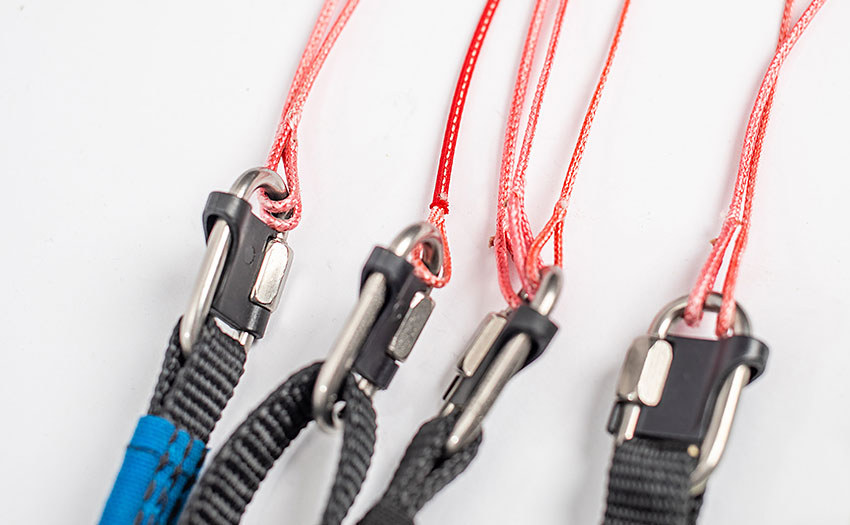
When I asked, designer Tom said he had a reason for that. “Yes, the leading edge is important for performance, but it is also important for safety. I’m not 100% convinced 3D shaping brings massive performance gains, and it comes at a cost for construction.” Instead he says he works with the way the leading edge naturally deforms in flight to help the dynamics of the glider. “I use the deformation of the nose to get very smooth reactions. For example, it’s less dynamic in an asymmetric collapse.”
He added: “I also have a low-tension part of the nose to help stop the propagation of collapses. If you have a very stiff leading edge you are more inclined to get massive collapses and dynamic reactions. In all my designs safety is the main thing.”
For the lines, Tom has used a pure three-line layout with unsheathed Dyneema lines throughout. The lines are red, so easier to see than some of the light brown unsheathed lines you find on wings. Tom said they have good stability over time. “On a prototype after 120 hours we found they’d only moved 1cm. You don’t need to retrim all the time.”
As with other Little Cloud wings there is no dedicated stabilo, something Tom has brought from his kite design work. The result is “a more balanced feel to the wing.”
The risers are made using the narrow webbing we have come to expect on this class of wing. The speed system uses good quality pulleys, but it should be noted they are positioned slightly higher than normal and Little Cloud recommend you make sure your bar is properly adjusted before flying.
The brake handles are nicely padded using wide neoprene and very comfortable. They attach with large strong magnets. There is a plastic shaped C-handle on the rear risers, but no connection to the B-riser as Tom says with the profile they are using they don’t think they are needed.
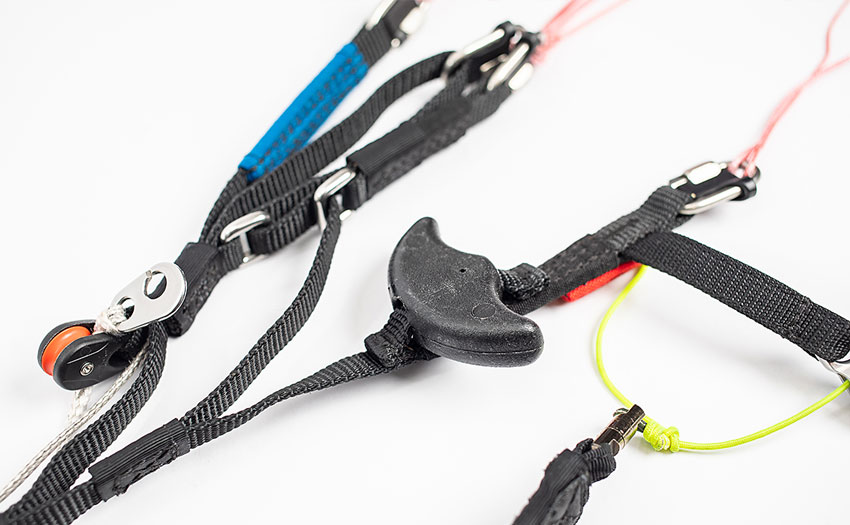
Launching
I launched in all sorts of conditions with this glider, apart from full-on gales. In all cases the wing came up easily, the only exception being a hike-and-fly to Forclaz launch in Annecy. I arrived to find a gentle backwind and the shiny material just slid on the carpet. Switching to the grass it came up easily enough.
In light winds, light pressure on the lines will ease the wing into the air. It comes up gently but smoothly – useful on small rocky, bush covered hike-and-fly-launches.
In normal thermic breezes everything is easy. It comes up reasonably quickly with just pressure on the risers. Once overhead the wing’s pitch stability is evident, with almost no tendency to overshoot. It will just sit there ready to go, behaviour you would usually associate with lower aspect ratio wings.
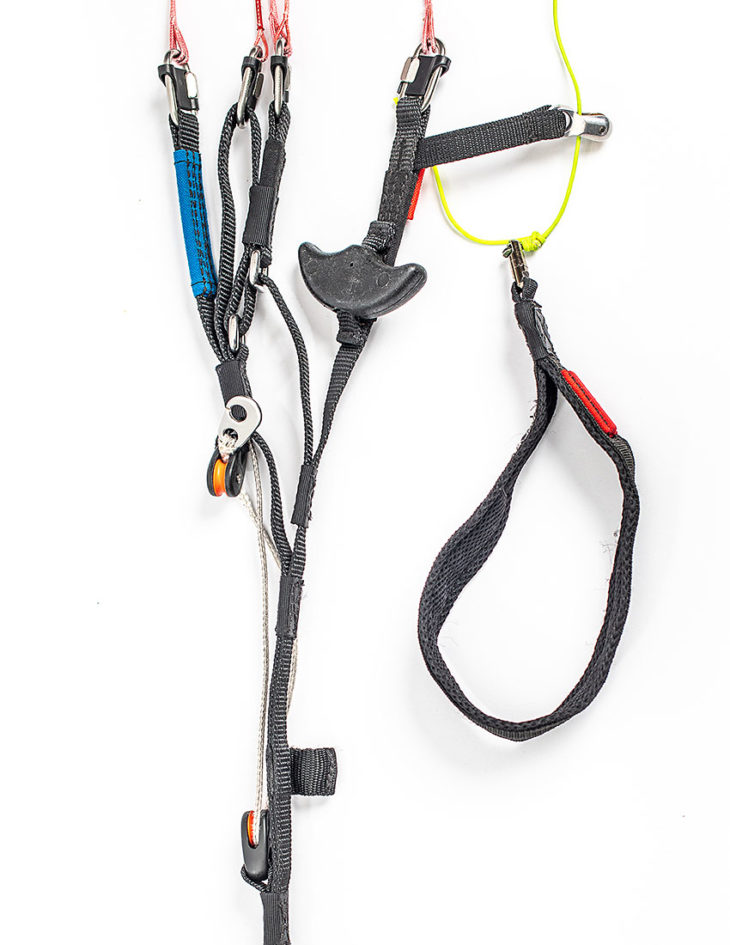
In the air
Brake pressure is firm enough to give you feel, without making your arms tired. The brakes are nicely reactive and the glider responds instantly to input. Push more and it will give you a steeper banked turn and there is no mushiness when you go deep. Stop the input and the wing stops its turn quickly.
Tom seems to have taken the behaviour from his smaller wings. I remember flying the Spiruline, Little Coud’s original and iconic mini wing, when it first came out. With that you could be throwing it about but as soon as you stopped the inputs, it came back to straight and level flight immediately. This is echoed in the Urubu where the agile and direct handling allows you to put it exactly where you want it and make the most of the lift.
The other noticeable attribute of the wing is its pitch stability. It needs very little management. There is no noticeable pitching when entering thermals either, the wing just pulls in. But it’s subtle, so subtle that pilots used to wings with stronger movements might find it a bit disconcerting at first. It’s when you fall out of the lift that this “pitchless” property of the wing really shines – it never once felt like it was going to surge big time on me, and I flew in some strong, windblown conditions with hard-edged thermals.
In fact the wing felt secure all the time. (I only ever had a couple of small collapses, and then because I was hands-off fiddling with my camera.) This is probably in part down to the great feel for the wing you get through the brakes. Movement of the air is transmitted through both harness and brakes, but the brakes give a really good feel for the pressure in the glider, so you can react instinctively to any pressure loss.
This combination of agility and feel gives a wing that is perfectly pitched (excuse the pun) at its intended market. C-level pilots will be able to use the information and precision to get the best out of the wing.
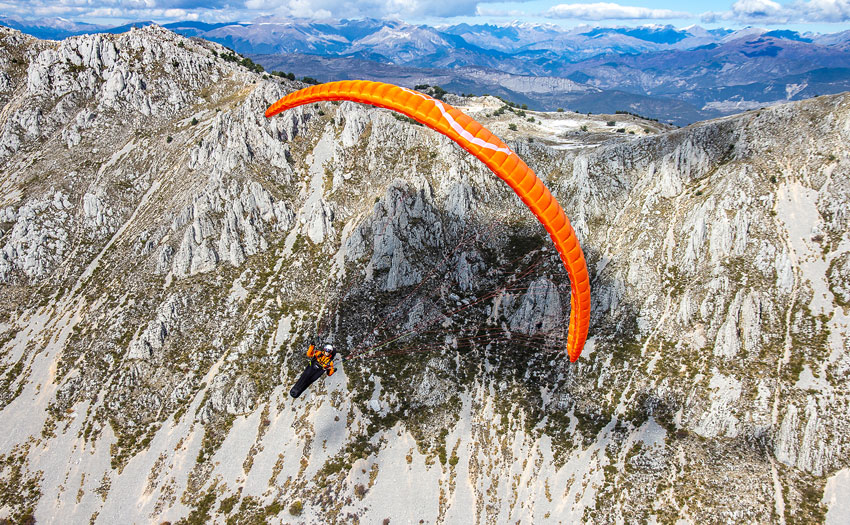
Photo: Charlie King
Hike-and-fly
The 24 size I flew weighs in at just 3.8kg for a wing that will carry from 85-105kg all up. With the low weight and compact packed size I just had to take it out for some hike-and-fly trips. The wing fitted into our Sky Crux split-leg harness bag for carrying up the hill, and I used it with a Neo front-mounted reserve holder. This setup was easily light enough for hiking, with the benefit of having a performance wing when in the air.
One morning I headed to our ‘secret’ launch. From there I was able to use the wing’s performance to glide round into the cliffs and make use of the early lift. Soon I was established and climbing to the top of the mountain. What a way to start the day!
Despite being well down the weight range it still flew well, handling thermals with no pitching back or being pushed out. The simplicity of it all put a big smile on my face.
On tour
This is undoubtedly an XC machine. I did several mountain flights on it and it always felt safe but with a good level of performance. Those thin lines and small inlets push what could easily be dismissed as a simple design to the same performance levels as some of the more complex wings in this class. Trim speed seems to be fast, similar to the Flow Fusion I was also flying at the time, and noticeably quicker than some other C wings I’ve flown.
The bar is easy to use and the wing feels nice and pressurised across the range. The C-handles do give a good amount of feel for what the air is doing, but not quite the engaged feel of the hybrid designs that alter the angle of attack. I noticed there was a crease along the span on the lower surface when they were pulled. However, the wing retains its great pitch stability at speed, and I used them more for feeling the air and gentle steering rather than catching the wing.
Big ears are easy to pull in and work with no fuss or flapping. As you would expect from this class of glider they will need some encouragement to come out quickly, but will roll out if left. Used with speed bar they are effective for getting away from sucky clouds, as I tested a couple of times.
Turn up the fun
So you might be thinking this is all serious performance and not very Little Cloud, but rest assured it has a fun side. Get a bit deeper in the brakes and use a dose of weightshift and this Urubu will get up on a wingtip and carve lovely smooth wingovers that will have you beaming from ear to ear.
The precise control on the brakes will also have you flicking the wing around making a fun machine for soaring sessions. Spirals are the same: easy to get into and hold, but ease off and the wing will bleed the energy and come out smoothly; no fuss, just smiles.
Verdict
Some will no doubt be put off by the lack of certification, but I’ve got to know designer Tom Bordeau over the years and I would completely trust him to be honest about the safety of a wing he sells. As he says, “no serious manufacturer would want to put out a wing that isn’t safe.” My time with the Urubu proved my trust wasn’t misplaced. It’s a wing that gives you the feel and control to keep safe, along with behaviour that will look after you in real life conditions.
Others may also be put off by the apparent lack of all the latest technologies, but Tom has spent hundreds of hours crafting a wing that has real-world performance that puts it firmly in C-class territory and allows it to play with the best. This year I have been lucky to try some of the wings that have come out in this class, and across the board we seem to be getting our cake and eating it in terms of performance and security. The Urubu is a fine example of that, and if you want something a bit exotic then I recommend you give it a try.
Manufacturer’s SPECIFICATIONS
Little Cloud say: “The glider keeps that compact feeling, but has incredible damping abilities for this class of wing, while still having a very high thermal-sniffing capability.”
Use: XC, vol-biv, hike-and-fly
Pilot level: Advanced (EN C)
Sizes: 21, 22, 24, 26
Flat area (m2): 21.0, 22.5, 24.5, 26.0
Take-off weight (kg): 55-75, 70-90, 85-105, 95-115
Glider weight (kg): 3..4, 3.6, 3.8, 4
Cells: 57
Flat aspect ratio: 6.14
Certification: EN 926-1 (load test)
Published in Issue 216 (Dec 2020 / Jan 2021)


